
MIRNA MARIJANOVI Ć
EXCAVATIONS
20 – 22
All artworks presented in this catalogue were exhibited at the Old Elementary School of Artemonas in Sifnos, Cyclades from the 1st until the 17th of August, 2022.
ARTIST STATEMENT
The conceptual topics most dominant in my work are identity politics, poetics and archaeology, while the expressive mediums I use to process them combine spatial, research based and artistic practices. I recently started engaging with printmaking –specifically etching and monotype– and adopted these techniques as my main tools for illustrating my research. Through the construction of visual narratives using a language whose elements emerge from natural and organic structures, I aim in creating stimulus for re-examining identity, diversity and the encounter with theother.Through experimenting with existing printmaking techniques, my intention is to attain —in each series of works I produce— a unique language that would serve aesthetically and morphologically the themes I engage with, and highlight the value of contingency, as a significant factor of plurality and heterogeneity in any natural process.
Through the poetics of unproductive,unintentional (in terms of reaching an agreement) and non-strategic dialogue, one can find a counter-history which emerges as a possibility in what“we tend to feel [are] without history” [1]. In emotions, sexuality, instinctive gestures and other elements of everyday life, one can extract —akin to an archaeological excavation —these bits of the self that compose the constellation of its manifestations, that cannot be captured in the pursuit of an identity defined by predeterminednarratives.Instead,itistheseaspectsoftheselfthatform the maze one has to travel through in order to reach the core of another’s existence.The pursuit of what I vaguely refer to as constellation or maze would lie outside of the neat and linear, being a pursuit of emergence as describedintheconceptofgenealogy–notaprocessofestablishingtruth, but of deconstructing what we perceive as an entity and of revealing the heterogeneity in what we imagine as a depiction of itself [2].
ThewayIunderstandgenealogyanditsrelationtoarchaeologicalpractices, is an aim to mine traces, incidents, moments that fragmentally reflect aspects of subjectivity and can be connected and thus historicized, becoming parts of the narration of one’s existence. In the same way the archaeologist detects the traces of the former in the present, building on a dual narrative of an object’s existence as a living being and a fossil, I tried to find the traces of a lived experience in present testimonies and promote them as unifying possibilities. However, before genealogy, the synthesis of archaeological analysis and unrecorded knowledge under a political scope,precedes the process of collecting evidence from the field of encounter and before the encounter,there is the subject.
Thesubjectisasite—intheformofabody—wherethetracesofits/their emergence and condition are mapping a history that has happened, yet “cannot be hypostatized in any chronologically identifiable event”[3].In thissitethearchaeologistcanfindtheevidencefacilitatingthepossibility of interpreting, and therefore relating to one’s experience, betrayed in their poetic expression of being. The subject stands alone, as I am now alone in my room, excavating archaeologies from paper, mining fossils fromthesiteswhereI’veexistedandexistrightnowwithoutbeingableto separate them —creating my constellation of being.
1. Foucault, Michel, Language, Counter-Memory, Practice: Selected Essays and Interviews, (New York: Cornell University Press, 1980), p. 139.
2. Foucault, Michel, ‘Nietzsche, Genealogy, History’, in Language, Counter-Memory, Practice: Selected Essays and Interviews, ed. by D. F. Bouchard, (Ithaca: Cornell University press, 1977)
3. Agamben, Giorgio, ‘Philosophical Archaeology’, in Law Critique 20, 211 (2009). https://doi.org/10.1007/s10978-009-9052-3.


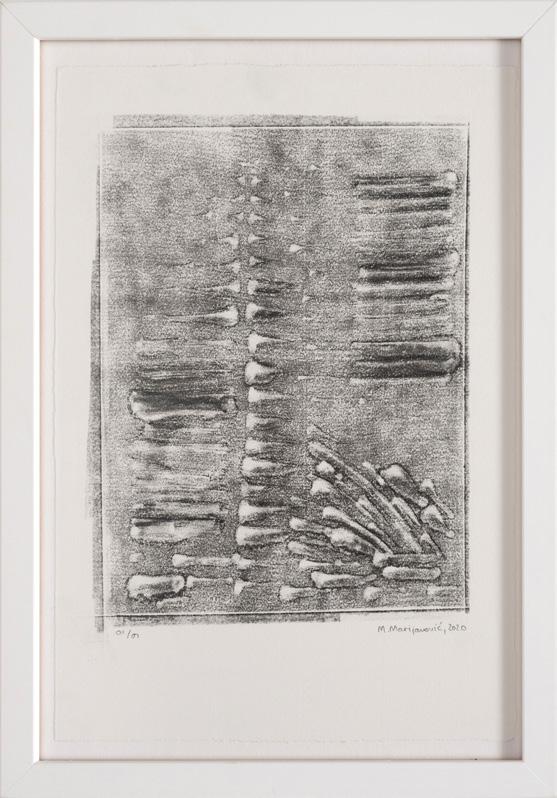

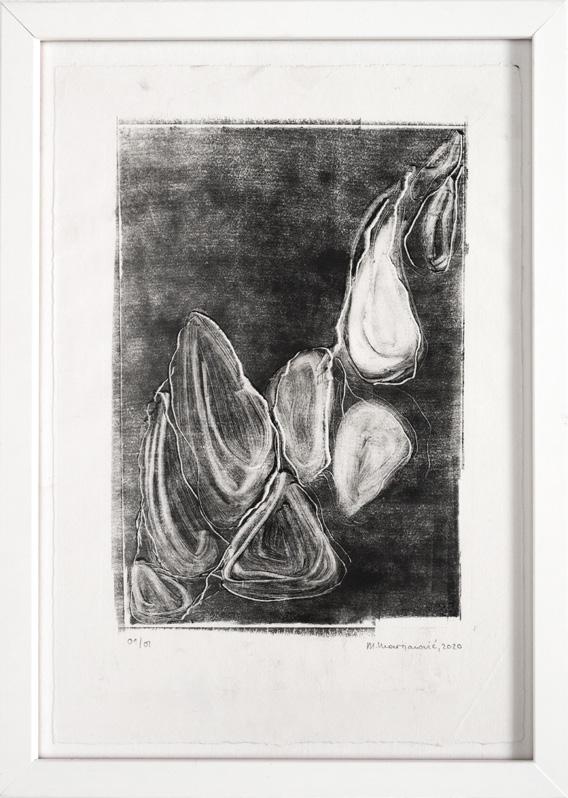






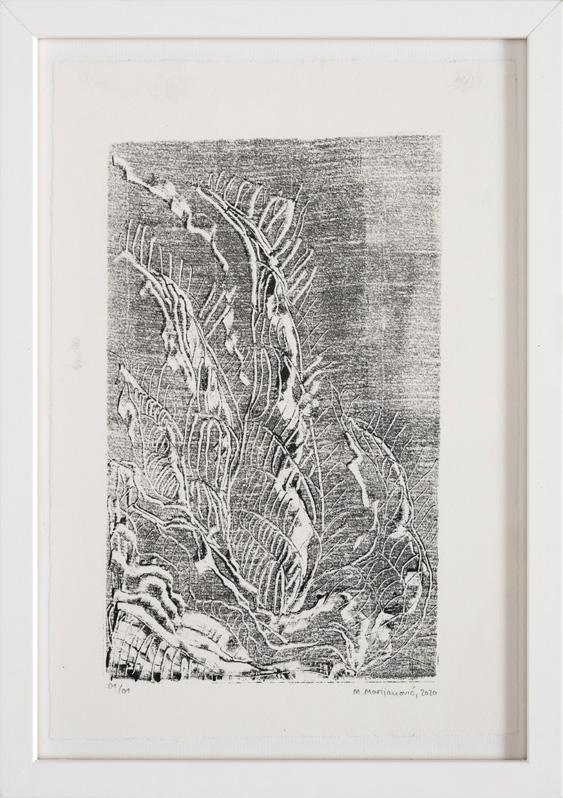





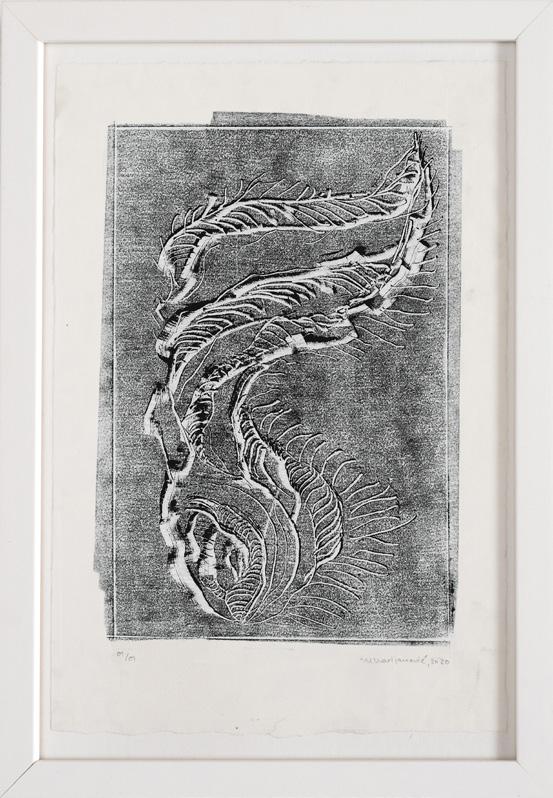





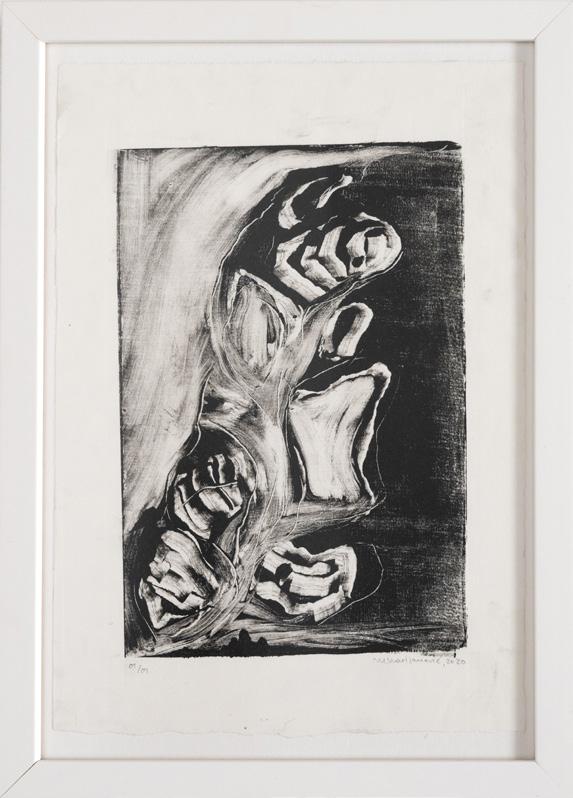
ISKOPAVANJE, 2020–2022
Monotype Lithography
30 individual prints, 20x30cm



UNTITLED, 2022
Monotype Lithography 60x75cm
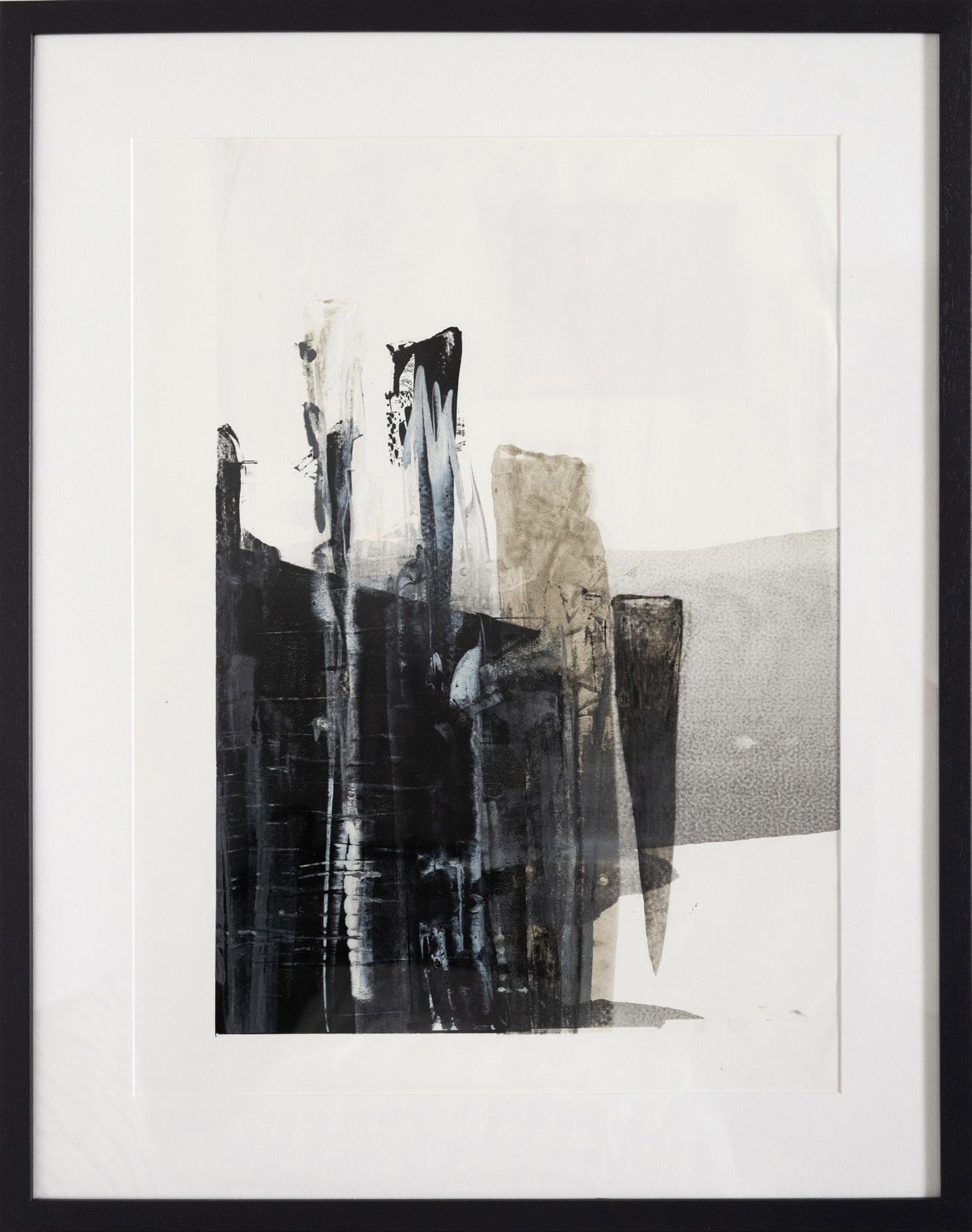
UNTITLED, 2022
Monotype Lithography 60x75cm
CREATURE, 2020
Monotype Lithography
20x30cm


UNTITLED, 2020
Monotype Lithography 20x30cm

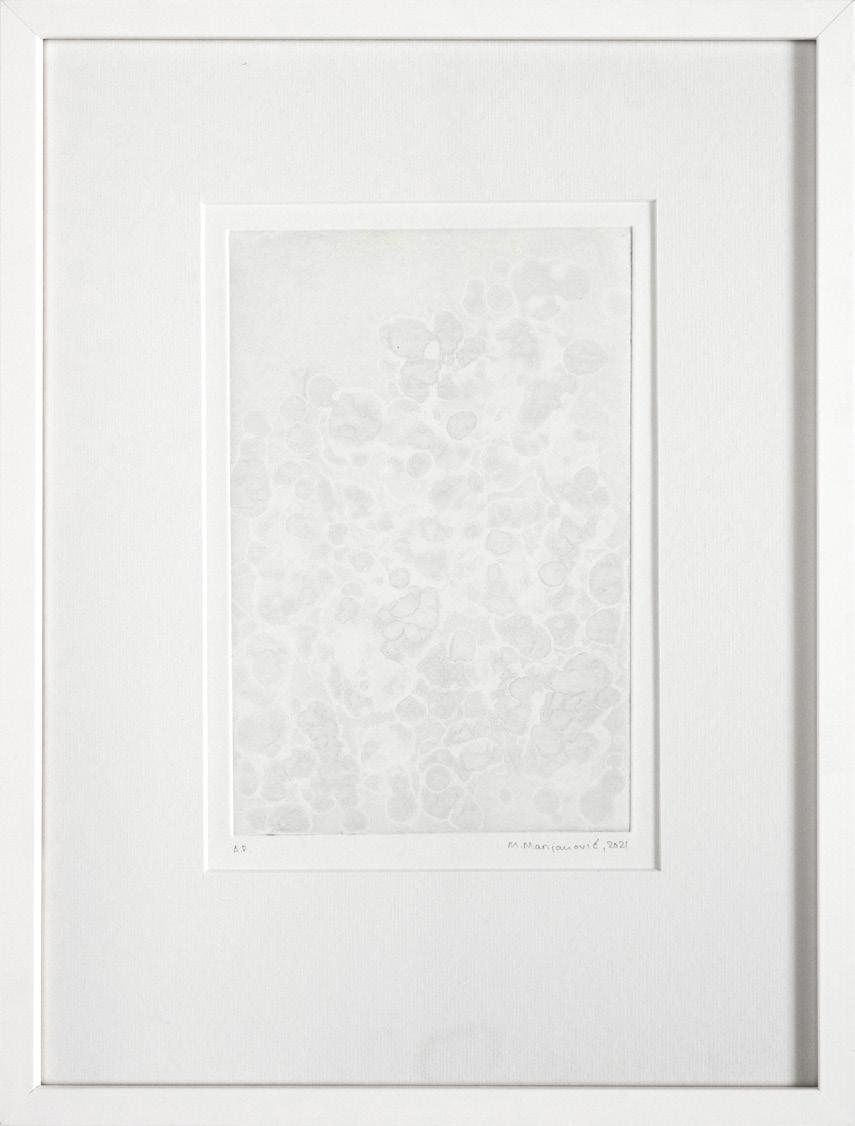
POPULATIONS, 2021


UNTITLED, 2021









A.P / 10 series of 30, 30x40cm


UNTITLED, 2022
Monotype Lithography
30x40cm
Myrna Marianovits is a Greek-Croatian illustrator and architect, born in Thessaloniki. She studied and worked as an architect in Greece and Portugal, and recently graduated from the Royal College of Art with an MA in Visual Communication. Her practice is trans-disciplinary and consists of participatory community projects, various forms of spatial design, illustration, academic research, teaching and printmaking –focusing on aquatint and monotype. The topics she explores revolve around identity politics, poetics and archaeology and her visual language emerges from the conceptual processing of her theoretical research. She currently lives and works in London, as a freelance designer.
